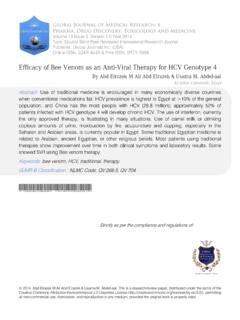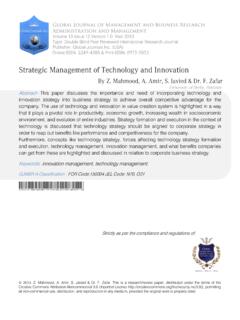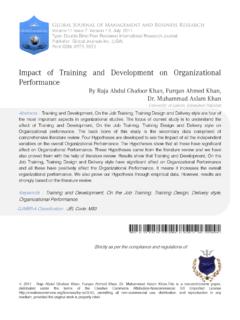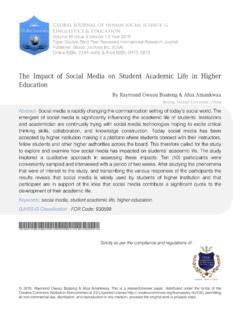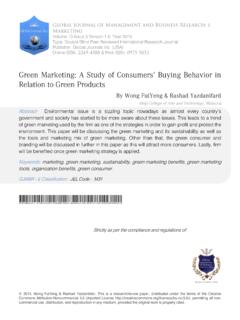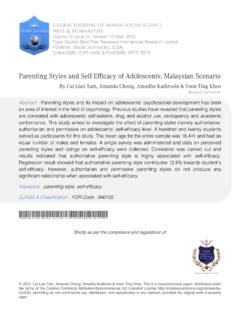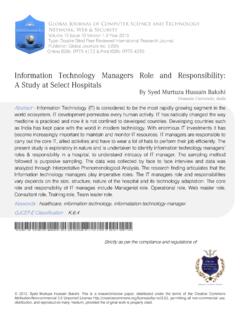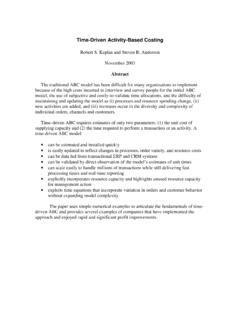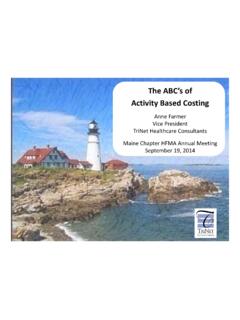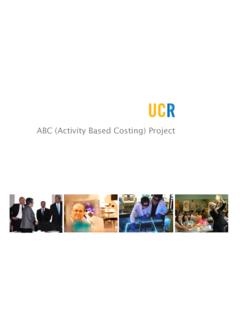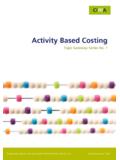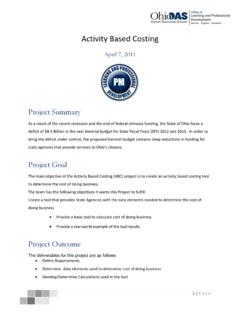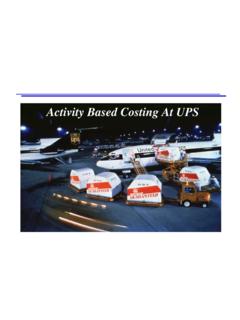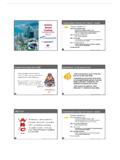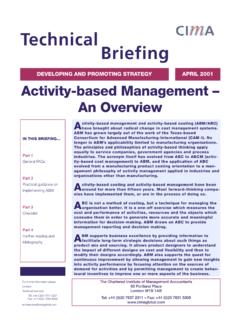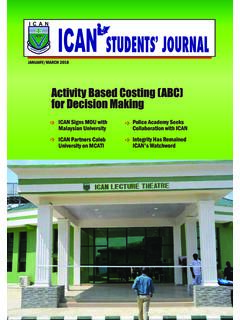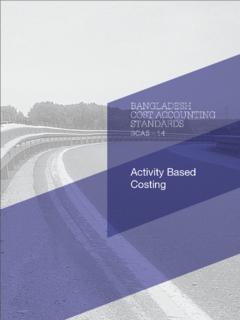Transcription of Current Trends of Application of Activity Based Costing ...
1 2013. Nitin Kumar & Dalgobind Mahto. This is a research/review paper, distributed under the terms of the Creative Commons Attribution-Noncommercial Unported License ), permitting all non-commercial use, distribution, and reproduction in any medium, provided the original work is properly cited. Global Journal of Management and Business Research Accounting and Auditing Volume 13 Issue 3 Version Year 2013 Type: Double Blind Peer Reviewed International Research Journal Publisher: Global Journals Inc. (USA) Online ISSN: 2249-4588 & Print ISSN: 0975-5853 Current Trends of Application of Activity Based Costing (ABC): A Review By Nitin Kumar & Dalgobind Mahto Green Hills Engineering College, Solan, India Abstract - Activity - Based Costing (ABC) is a method for determining true costs.
2 Though ABC is a relatively recent innovation in cost accounting, it is rapidly being adopted by companies across many industries, within government and other organizations like institutions, finance or service sectors. In the light of Current practices, this paper emphasizes to understand the need and importance of ABC Costing in the organizations. This is coupled with management methods, an extensive range of uses, empowering utilization of ABC information for a wide variety of company functions and operations such as process analysis, strategy support and time- Based accounting, monitoring wastage and quality along with productivity management.
3 Keywords : Activity Based Costing , value added Activity , cost drivers. GJMBR-D Classification : JEL Code: D23 CurrentTrendsofApplicationofActivityBase dCostingABCAR eview Strictly as per the compliance and regulations of: Current Trends of Application of Activity Based Costing (ABC): A ReviewNitin Kumar & Dalgobind Mahto Author : Green Hills Engineering College, Solan, India. E- mail : Abstract - Activity - Based Costing (ABC) is a method for determining true costs. Though ABC is a relatively recent innovation in cost accounting, it is rapidly being adopted by companies across many industries, within government and other organizations like institutions, finance or service sectors.
4 In the light of Current practices, this paper emphasizes to understand the need and importance of ABC Costing in the organizations. This is coupled with management methods, an extensive range of uses, empowering utilization of ABC information for a wide variety of company functions and operations such as process analysis, strategy support and time- Based accounting, monitoring wastage and quality along with productivity management. Keywords : Activity Based Costing , value added Activity , cost drivers. I. Introduction n recent years, companies have reduced their dependency on traditional accounting systems by developing Activity - Based cost management systems.
5 Traditional Costing systems have a tendency to assign indirect costs Based on something easy to identify (such as direct labor hours). This method of assigning costs can be very inaccurate because there is no actual relationship between the cost pool and the cost driver. This can make indirect costs allocation inaccurate. Initially, managers viewed the ABC approach as a more accurate way of calculating product costs. But ABC has emerged as a tremendously useful guide to management action that can translate directly into The interest of manufacturer s in the ABC system grown significantly under the rapid growth of some markets especially in the manufacturing area, the increasingly growing indirect costs under the use of automated systems and the need for more accurate cost information to better manage the business and gain competitive advantages.
6 Activity - Based Costing is a process where costs are assigned due to the cause and effect relationship between costs and the activities that drive these costs. Moreover, the ABC approach is broadly applicable across the spectrum of company functions and not just in the factory. ABC reveals the links between performing particular activities and the demands those activities make on the organization's resources, so it can give managers a clear picture of how products, brands, customers, facilities, regions, or distribution channels both generate revenues and consume resources. The profitability picture that emerges from the ABC analysis helps managers focus their attention and energy on improving activities.
7 Productivity is critical for the long-term competitiveness and profitability of organizations. It can be effectively raised if it is managed holistically and systematically. Productivity measurement is a prere-quisite for improving productivity. As Peter Drucker, who is widely regarded as the pioneer of modern management theory, said: Without productivity obje-ctives, a business does not have direction. Without productivity measurement, a business does not have control. Measurement plays a very important role in the management of productivity. It helps to determine if your organization is progressing well.
8 It also provides information on how effectively and efficiently the organi-zation manages its resources. An integrated approach to productivity measurement: Provides a comprehensive picture of the organization s performance. Highlights the relationships among different ratios and units, and allows the organization to analyze the factors contributing to its productivity performance. Helps diagnose problem areas and suggest appropriate corrective actions. Enables the organization to monitor its performance over time and against the performance of other organizations. a) Resources and Various Cost Drivers An Activity is a specific task or action of work done.
9 It can be a single action or an aggregation of several actions. For example: moving inventory from workstation A to workstation B . B is an Activity that may require only one action. Production set-up is an Activity that may include several actions. i. Activity Driver The best single quantitative measure of the frequency and intensity of the demand placed on an Activity by cost objects or other Activity . It is used to I 2013 Global Journals Inc. (US)11 Global Journal of Management and Business Research Volume XIII Issue III Version IY2013ear ( )Dassign Activity costs to cost objects or to other profits. The Activity Based Costing (ABC) is designed to assign costs toactivities which enablemore accurate cost information.
10 Ii. Activity Work Performed by people, equipment, technologies or facilities. Activities are usually described by the action-verb-adjective-noun grammar convention. Activities may occur in a linked sequence and Activity -to- Activity assignments may exist. iii. Cost Object Any product, service, customer, contract, project, process or other work unit for which a separate cost measurement is desired. iv. Resource A resource is an economic element needed or consumed in performing activities. For example: Salaries and supplies are resources needed or used in performing manufacturing activities. v. Resource Driver The best single quantitative measure of the frequency and intensity of the demand placed on a resource by other resources, activities, or cost objects.


